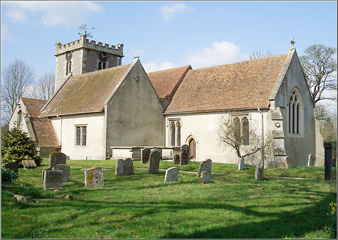Rectors of All Saints' Chilton

The list of Rectors can be seen near the main door: in total, 49 have served Chilton since 1270. Since 1949, there has been one rector for both All Saints' Church, Chilton, and St Matthew's Church, Harwell, and in 1976 the two were united to form a single benefice.
The first recorded incumbent, Philip Basset (rector from 1270 to 1298) was summonsed in 1275 for building a wall encroaching upon the King's highway.
During the Commonwealth (1649-1660) Thomas Lawrence, who had been rector since 1602, was removed from his post by the Puritans for being non compos mentis. One of his replacements, Dr Barton Holyday, was previously chaplain to Charles I and was appointed Archdeacon of Oxford in 1626. Among his contemporaries he enjoyed fame as a poet and playwright and one of his plays was performed in the presence of James I. Unfortunately for Holyday, the king was said to be so bored that it was only with greatest difficulty that he was dissuaded from leaving before the end of the performance. Dr Holyday's incumbency at Chilton was short-lived, as Thomas Lawrence (or possibly his son of the same name) was reinstated in 1660.
In the nineteenth century another long-standing incumbent was Charles Gaisford, who was rector from 1808 to 1857. He was evidently unimpressed with the rectory, for in 1816 he was licensed by the Bishop of Salisbury to absent himself from the benefice for two years "on account of the unfitness of the parsonage house". Hewett suggests that he may have stayed away longer than two years: writing in 1844, he asserted that "no rector has resided here within the memory of man".
Gaisford was succeeded by Edward Morland Chaplin, a kinsman of the Morland family who owned the manor. Appointed rector in 1857 at the age of twenty five, his youthful dynamism must have been a striking contrast to his predecessor: in his first full year he conducted 25 baptisms (there had been only four the previous year). The fabric of the building was another object of his enthusiasm: before long he subjected the diocesan authorities to a barrage of requests, which resulted in the repair of the nave roof in 1876. He died in 1877 aged 45 and is commemorated in the east window.